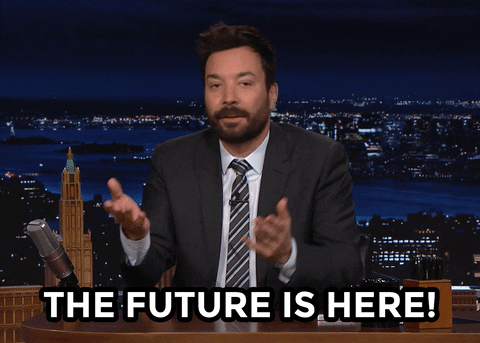The world is undeniably leaning more and more towards digital dependency. It seems that the more the digital social world expands, the more interpersonal social connections taper off. Marketers have noticed this growing divide and are constantly on the search for ways to bridge the gap. They are increasing their use of personalization to connect with their audiences as much as possible.
Artificial intelligence plays a big role in the rapid advancements of technology. Personalization in marketing is no exception. With AI-driven personalization, marketers can focus more intently on enhancing the user experience of their online platforms, and as a result – achieve better customer satisfaction and loyalty.
Let’s dive a little deeper into the power of AI-driven personalization for marketing agencies!

The role of AI in personalization
AI refers to the capability of computer systems to mimic human intelligence, learning from examples, and making decisions based on the acquired information. Basically, it’s machines that are taught to perform human tasks. They’re programmed with human-like intelligence and are able to adapt as they’re fed new information.
Personalization, on the other hand, involves tailoring services or products to meet individual customers’ preferences.
The combination of these two – that is, AI-driven personalization – means using artificial intelligence to customize services and products to individual consumer tastes. It’s the process of using AI and machine learning to sift through vast amounts of customer data. In analyzing this information, it gains an understanding of their individual preferences. It recognizes patterns in previous buying behavior, interactions and searches, and tailors the UX design accordingly.
It’s important to note that in order for the output to be accurate, the AI requires accurate and high-quality data input. From there, it takes clear objectives and constant tweaking to optimize the benefits of this use case.
The benefits of using AI for personalization
Improved UX
Personalized interactions mean that customers find what they need more quickly and easily. As a result, consumers engage more with your site and are more satisfied with the service. Customers will see that their feedback is taken seriously, making them feel appreciated and understood. This in turn leads to an increase in customer satisfaction and loyalty.
Increased customer loyalty
When customers feel a brand understands their preferences and needs, they are likely to stay loyal and make repeat purchases. Many businesses also experience a decrease in churn rates.
Enhanced conversion rates
Personalized recommendations make it more likely for a customer to make a purchase. The more relevant the recommendation, the higher the chances of consumers taking action. Pointing viewers in the direction of offerings that are best suited to their needs and wants leads to an increase in sales.
Data-driven decision making
AI-driven personalization provides valuable insights into consumer buying behavior. Businesses can use this information to make more informed strategic decisions. Gaining a better understanding of their customer base puts businesses in a great position to tailor their marketing and sales strategies to be as effective as possible.
Marketing efficiency
Personalized marketing messages are more likely to resonate with customers. With this simple tactic, marketers can reduce acquisition costs by as much as 50%, increase revenues by 5-15%, and increase their marketing efficiency by 10-30%.

5 ways to use AI for marketing personalization
Emails
Email marketing is a versatile way to use personalization. Whether it’s as simple as addressing a subscriber by name in newsletters or sending “You may also like” notifications based on their previous purchases, marketers can take advantage of this tactic in a number of ways.
One of the biggest advantages of using AI for email marketing is its ability to identify your audience’s optimal open time. This means that you can schedule an email to launch at a time and date that your viewers are most likely to open and engage with it. Your click-through-rates and number of opens will increase dramatically when this strategy is implemented correctly!
Recommendations
Product offerings are best received when they are tailored to the unique data of each individual customer. AI achieves this by analyzing vast amounts of user data across a number of different channels, along with their browsing history. This data will also help you make more accurate suggestions for similar items, promoting an increase in sales.
Predictive analytics
The more customer data you gather from the past, the better the chance of AI making accurate forecasts for the future. Based on previous browning and purchase history, AI can make predictions regarding future trends and behavior.
With predictive analytics on their side, marketers are able to optimize their sales funnels and customer journey. It also helps improve budget and resource allocations going forward.
Sentiment analysis
When it comes to understanding the sentiment behind a search or purchase decision, we need to look at the user intent. The AI analyzes the language and content to gain an understanding of the sentiment. This information is then used to enhance future marketing campaigns and chatbots, programming them to alter their responses in a way that resonates with the user.
Search assistants
Applications like Google Lens allow users to take or upload a picture of an item to the search engine rather than having to explain what they’re looking for. This makes the search process much simpler for users.
Smart Search fills in blanks and completes phrases with autosuggest. It uses contextual recognition and autocorrect to simplify the search process, enhancing the user experience and satisfaction.

Examples of effective personalization
Netflix
Easily one of the most well-known examples, Netflix uses algorithms to analyze viewing habits, ratings, and behavior. This data is used to suggest personalized recommendations, leading to longer viewing sessions and increased viewer satisfaction. It’s resulted in huge popularity along with higher engagement and retention rates.
Spotify
Similar to Netflix, Spotify uses AI to analyze listening behavior and preferences. It then generates personalized playlists such as the Weekly Discover playlist. This enhances user experience and facilitates music discovery.
Sephora
Sephora uses AI in one of the most unique ways. With its wide range of beauty products available, they looked for a way to enhance their customer satisfaction.
They developed AI facial recognition software to make product recommendations that are best suited to the user’s features and skin type. They’ve claimed that this has contributed to improved customer satisfaction and trust.
Amazon
Amazon is another industry leader that uses AI to analyze individual customer preferences and shopping behaviors. Based on this analysis, they make personalized product recommendations. This not only improves customer experience but also significantly boosts their sales by up to 35%.

The future of AI-driven personalization
Marketers often mistakenly underestimate AI’s potential. The global revenue market for AI marketing currently stands at 27.4 billion US dollars. By 2028, it’s expected to reach 107.4 billion. This should give a clear indication of the potential these technological advancements hold for agencies.
With technology that’s constantly evolving, we’re seeing the development of new trends from marketers trying to take advantage of it. We’re seeing more and more people and industries embracing technology as it advances. The rising popularity of conversational chatbots are a prime example – if you’ve ever used Siri or Alexa, you may be more open to the technology than you thought.
Voice searches are also growing in popularity in recent years, with more than 1 billion voice searches taking place each month. With these advances, marketers are faced with the challenge of optimizing their content for these types of searches if they want to stay relevant and give competitors a run for their money.
Augmented reality (AR) and virtual reality (VR) are quickly becoming commonplace in everyday lives. While this technology is still relatively new, the potential for it in today’s marketplace is undeniable.
Apps have been developed that allow users to take a photo of their living room, upload the image, and test different paint colors using in-app software. You can test various features, such as rugs, curtains, furniture – the works! It’s had a huge impact on user experience and satisfaction, allowing users to visualize the outcome before making a purchase. With a new interactive approach, marketers are seeing a huge influx of engagement and sales.
Agencies need to understand that data is the foundation of all artificial intelligence. It uses this to learn, evolve and generate appropriate output. The quantity and, more importantly, quality of data input has a huge impact on the reliability and accuracy of the AI’s output. It’s used for machine learning, decision-making and future predictions.
Statistics that support personalization in marketing
- 90% of leading marketers say personalization significantly contributes to business profitability.
- 80% of consumers are more likely to do business with a company if it offers personalized experiences, and 90% find personalization appealing.
- 61% of people expect brands to tailor experiences based on their preferences.
- Companies that optimize personalization generate 40% more revenue than their average competitor.
- Personalized call-to-actions perform 202% better than basic CTAs.

How marketing agencies implement AI-driven personalization
1. Foster innovation and experimentation
If you want your agency to be seen as an industry and thought leader, then you need to foster an environment for innovation and experimentation from team members. Encourage your marketing team to develop their ideas, test the outcomes and refine their processes. This is how new, unique and successful ideas are born.
2. Set clear objectives
Objectives form the foundation that all successful marketing strategies are built on. Agencies need to have a clear understanding of their “why” when targeted audiences. Understand the goals you want the personalization to achieve – Do we need to increase revenue? Are we looking to increase engagement? Does our UX need improvement? Will it help reduce high churn rates? Clearly identifying your content marketing KPIs is a useful tool for any and all marketing agencies.
3. Use high-quality data
Accuracy leads to accuracy – that’s all it comes down to. If you want AI to produce accurate, reliable output, you need to feed it high-quality data as an input. What you put in is what you’ll get out. Larger amounts of data will also contribute to its accuracy, and it’s best to collect it from various different channels to make sure you build a comprehensive idea of your audiences.
An added benefit of using AI is that it’s capable of analyzing structured and unstructured data. It also eliminates the chance of human error that comes with manual entry.
4. Test and refine the strategy
Agencies should use their customers as a source of inspiration. While feedback may not always be positive, it always presents an opportunity for improvement. Use the feedback gathered from users to tweak your strategy where necessary. The goal should be to improve the user experience of your content wherever possible.
Monitoring feedback is the best way to make sure you’re meeting the expectations of your users and achieving optimal satisfaction. Your audience will also feel valued and appreciated if you show an interest and genuine concern for their opinions and needs.
5. Transparency
Being transparent with your audience is a surefire way to establish a sense of trust and credibility. Make sure to always disclose the purpose of your data collection and what you’ll use it for. Give your users easy access to your privacy policies and share how you aim to protect their data from outside sources.
6. Multi-channel integration
Implementing personalization across all marketing channels ensures a holistic approach to customer satisfaction. That includes email marketing, social media management, in-store and landing pages. Consistency across all marketing and branding ultimately leads to enhanced UX. If you’re asking why we say that – 69% of consumers claim to want a personalized and consistent customer experience across multiple channels

Take away…
Gone are the days where generic, impersonal marketing was effective in grabbing the attention of consumers. There are thousands of ads popping up on their screen daily, hundreds of emails ending up in their spam folders, and what makes yours any different? What sets you apart from the competition? What tells the user “Hey! I’m here for you, I care, and I’ve got you covered.”? A personal touch sewn into your entire marketing strategy – that’s what!
An email that addresses them by name.
A personal discount code for a product that they searched for a month ago that’s now on sale.
A promo code just for them as a thank you for their loyalty after five purchases.
All of these offers and attention to detail show your audience that you care. Responding to feedback carefully and sincerely, while addressing them by name and acknowledging their statement or query will go a long way.
As we mentioned before – as the world becomes more digitally inclined and technologically savvy, we are losing touch with one another on a personal level. Remind your audience of what it is to have a conversation, to have someone understand their needs and wants, and to feel seen and heard. The world can be an insensitive place where people easily lose their individuality. Go the extra mile in giving it back to them through your marketing, and see the figures soar as a result.

- How AI is Transforming the SEO Landscape: A Marketer’s Perspective - February 29, 2024
- How To Use AI For Keyword Research: A Marketer’s Guide - February 16, 2024
- The Impact of AI Writers on SEO Performance: Friend or Foe? - January 31, 2024
